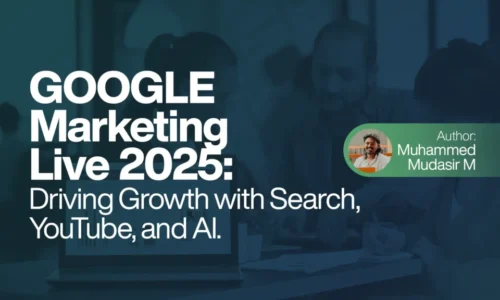Digital Marketing Strategies in Modern Healthcare, a Modern Marketing: Hospitals in the Digital Age
Today, the digital world isn’t just dominated by tech companies or retail giants. It’s not just about a website anymore. Hospitals, too, are embracing the digital marketing revolution. Healthcare providers are establishing themselves as industry leaders through digital marketing as they connect with patients and build trust. In this article, we’ll explore how this shift is evolving, why it matters, and what hospitals can do to stay ahead of the game.
Table of Contents
Patient Behaviour: A Changing Face
There are no longer days when patients simply walked into their nearest hospital based on word-of-mouth or a recommendation from a family member. When searching for symptoms, reading reviews, and checking hospital ratings, the majority of patients today research their symptoms online. In other words, hospitals without a digital footprint are invisible to a huge segment of potential patients. Sadly, that’s the truth. Digital marketing isn’t optional anymore. It’s survival.
An effective online presence can make all the difference
Consider your hospital’s website as its digital front door. There will be no one walking through a rusty, confusing, or difficult-to-find door. Building digital trust begins with a mobile-friendly, easy-to-navigate website.
Make sure it includes:
- Clear contact info
- Doctor profiles with credentials
- Service offerings
- Online booking options
- Patient testimonials
- Blog or health tips section
These aren’t just nice-to-haves; they’re deal-breakers.
SEO: The Secret Weapon
Search Engine Optimization It’s not just your hospital’s visibility that’s at stake with SEO (Search Engine Optimization).Searching for relevant terms such as “best eye specialist near me” or “emergency care in Alappuzha ” puts you in front of people who are actively seeking healthcare.
Invest in:
- Keyword-optimized content
- Local SEO with Google My Business
- Patient-focused blog posts
- Meta descriptions and tags
If your hospital isn’t showing up on page one, you might as well not exist.
Bringing the brand to life through social media
It is not easy to navigate the healthcare system. By using social media, you can bridge that gap. Hospitals can humanize their services through platforms such as Facebook, Instagram, and even LinkedIn, and showcase their staff directly to their communities.
You can use social media to:
- Share behind-the-scenes content
- Post health awareness campaigns
- Highlight patient success stories
- Offer Q&A sessions with doctors
- Run local health event promotions
Being active on social media also positions your hospital as approachable and caring—a major trust booster.
Paid Ads: A smart targeting strategy that delivers real results
With Google Ads or Facebook Ads, you can put your hospital services in front of the right people. Pay-per-click ads allow precise targeting based on age, location, interests, and even health behaviour’s, whether you are promoting a new Cataract Surgery wing or seasonal vaccination drives.
When you combine this with compelling visuals and clear calls to action (“Book now,” “Free Consultation”), you’ll see rapid results.
It’s still all about the content, and it’s more important than ever
Your hospital will gain credibility in the healthcare space with educational blogs, explainer videos, infographics, and webinars. When you provide knowledge, people trust you, and you become known as a go-to authority.
Here are some examples:
What is the best time to see an eye specialist?
Here are five myths about cataract surgery.
The Importance of Regular Health Check-ups”
The purpose of this kind of content is not only to improve SEO, but to build a relationship with patients even before they walk in.
Manage your online reputation and reviews
Online reviews have become just as trusted as personal recommendations nowadays. Your Facebook page or Google page could be a great place to encourage happy patients to leave reviews.
You should also not be afraid to post a negative review from time to time. Professionalism and care are demonstrated by responding politely and constructively.
You can automate review requests by emailing or texting them after you have visited. If you simply ask people for feedback, you might be surprised at how many will respond.
Stay connected with email marketing
Staying in touch with your community through an email newsletter is a wonderful idea. Keep your subscribers updated with seasonal health tips or reminders of upcoming appointments. Making patients feel valued is easier when they receive personal emails (“Hey Nizen, it’s time for your annual check-up!”).
You just need to avoid spamming. Keep it relevant, helpful, and consistent.
Smart Decisions Are Based on Analytics
Measurability is what makes digital marketing so appealing. To find out what is and is not working, use tools such as Facebook Insights, Google Analytics, and email campaign reports.
After reading a blog, are more people making appointments? Does the most traffic come from a single doctor’s profile page? Use the data to focus even more on the things that are producing results.
Conclusion: Digital is the New Bedside Manner
The human element in healthcare is being enhanced by digital marketing, not replaced. When executed properly, it demonstrates your hospital’s commitment to transparency, modernity, and patient-centeredness.
Hospitals can reach a larger audience, forge closer bonds with patients, and eventually deliver better care by developing a strong online presence.
Thus, it is time to take digital seriously, regardless of how big your multispecialty clinic is or how small it is. Because authority in today’s healthcare industry is not solely based on bed count, but also on how you interact, connect, and serve in a world that prioritizes digital technology.
Welcome to the future of healthcare marketing.
Author Info
Nizen Chacko, an entrepreneur and digital marketing strategist in Alappuzha.
Learner of CDA Online Digital Marketing Institute.



